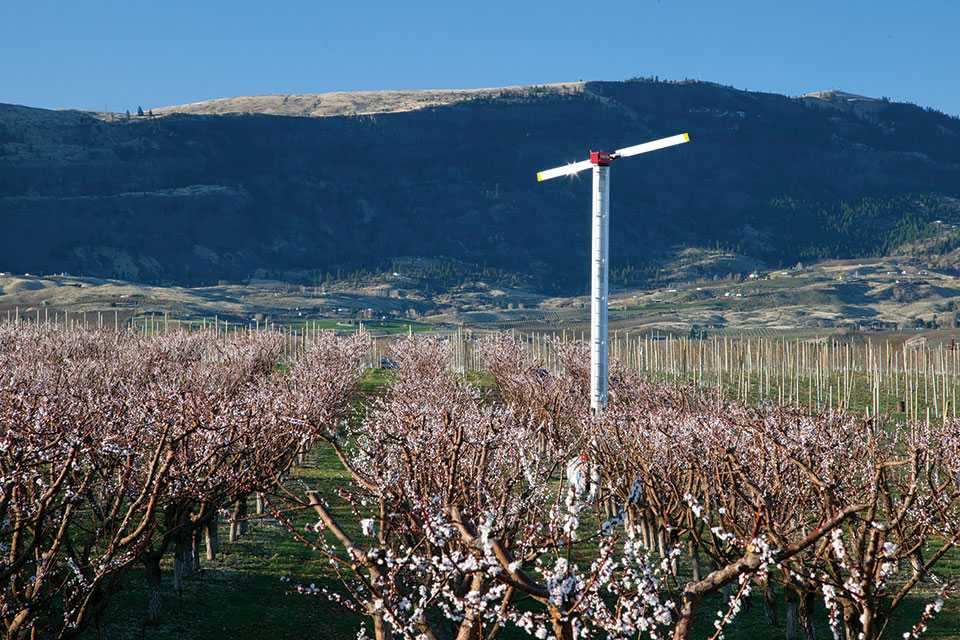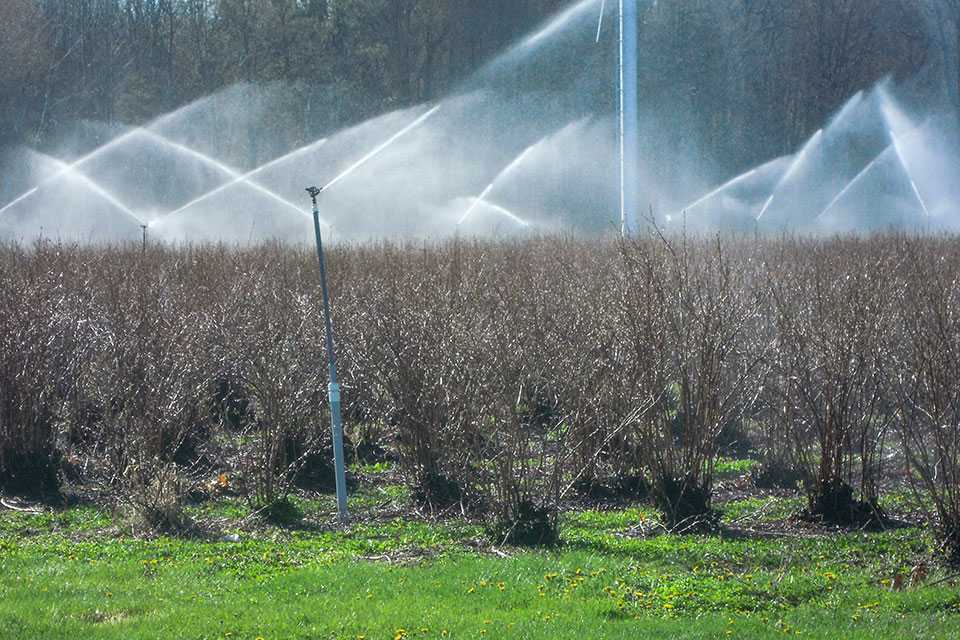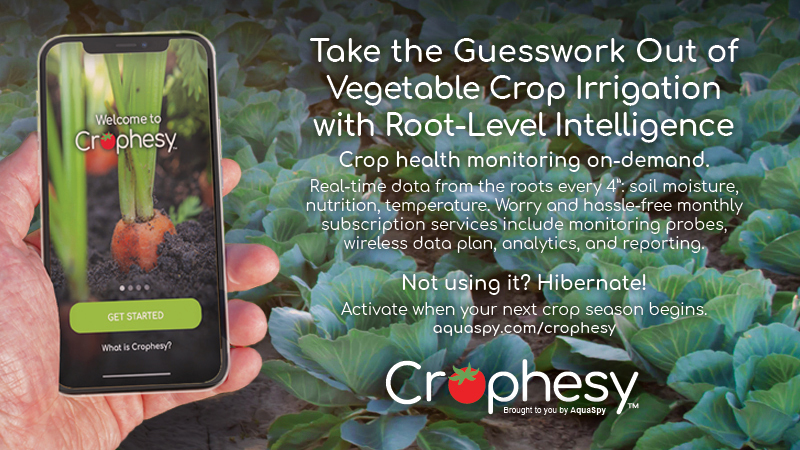Ways To Get In Front of Frost Damage in Your Orchard
Growers bent on controlling frost damage should first understand they have options. Depending on present conditions, they could rely on wind machines, water, heaters, or a combination thereof. On top of that, sensors, they should know, are invaluable.
“It’s all about the tools you have in your tool belt,” Ben Smith, Semios Technical Sales Support Specialist, says. “For example, while wind machines and heaters can be used in the moment, irrigation water can be very impactful when used to wet the soil the day or days before the expected frost event.”
As spring 2021 arrives, several manufacturers report on the state of frost control:
BLADES OF GLORY
With regard to ROI, wind machines are the best per-acre choice growers can make to ensure quality harvests, Dana Morgan, a sales representative with Orchard-Rite proprietary dealer Cascade Wind Machine Services, says. Orchard-Rite’s machines are customizable to each site and can be remotely monitored throughout the world with the AutoStart ORCell system and an internet connection. It takes the liability out of frost protection, Morgan says, with thicker towers, ductile castings, shear pin couplers, and solid fiberglass blades.
“With the market in frost protection being as tight as it is, growers need to be assured that they have the highest quality and most reliable protection in every block,” Morgan says.

A wind machine stands at the ready in this Washington State fruit orchard.
Photo courtesy of Heidi Burmeister, Marketing Director, Orchard-Rite
Without that protection, growers can lose more than just their crops. “Frost control is not only for fruit on the trees or vines but also for the plant or tree itself,” P.J. Method, Sales Manager, Amarillo Wind, says.
As valuable as wind machines are, they have their nuances, according to Altrac General Manager Neil Schultz. The company, which offers cellular products with digital temperature probes that enable growers to monitor and control wind machines or frost water pumps when weather conditions drop below minimum thresholds, has found that 5% of its clients’ machines do not start up correctly on a given frost night.
“Most growers deploy staff with thermometers to drive around the orchard on frost nights to verify the machines are operating correctly. They have no idea about actual equipment performance during the evening, only what they observe at each machine,” Schultz says. “It is difficult to determine a properly functioning wind machine since they automatically turn on and off throughout the night.”
At Vamco, the question General Manager Mark Veteto often hears is “How much do wind machines raise the temperature?” His response: They don’t, at least not by themselves.
“When ice bacteria form on plant surfaces, it feeds off of the contacted tissue and literally sucks the life out of that tissue,” Veteto says. “Research has guided the development of wind machines, which have evolved into what we see today.”
All major manufacturers, he says, follow the same guidelines: tower height (35 feet), fan shaft downward angle (6 degrees), horsepower (minimum 10hp per acre), and fan design (slow speed, high volume). The reasoning: Machines must cover a 10-acre square block, as within that area a wind machine can both move ample air and reach the outer corners.
Outside of that 10-acre block, Veteto says, the air mass that had started out mixing with warm inversion air has started to lose most of its heat value back to
the atmosphere.
“Growers rely heavily on the upper inversion layer of warm air, which exists most nights of a frost event,” Veteto says. “Natural wind drift helps move mixed air through the field and down wind, down slope. When machines have been spaced farther apart — even with higher horsepower fans — there is still frost damage occurring as the cold air has re-formed in those spaces. When water or other forms of supplemental heat can be provided, the performance of the wind machine is greatly enhanced.”
IRRIGATION OPTIONS
If budget constraints dictate that growers choose between installing wind machines or under-tree sprinklers, they are nearly always better off choosing the latter, according to John Rowley, Rotator Sprinkler Product Manager, Nelson Irrigation. This holds true even if water storage is required.
“A full-coverage irrigation system that is also used for frost protection can be used to improve crop yield and quality and soil health,” Rowley says. “If wind machines are already installed, adding an under-tree frost control system will improve the effectiveness of their frost control measures.”

It is important to keep the overhead sprinkler on for freeze well into the morning the following day until ice starts melting.
Photo by Mark Longstroth
Growers do not necessarily need to have large-volume sprinklers to get small degrees of frost protection, Justin Evans, Sprinkler Product Manager, Jain, says.
“Many under-tree micro irrigation systems can provide a few degrees of protection by releasing heat units from the soil,” Evans says.
A common practice during frost season, according to Travis Goldman, Irrigation Management Advisor, Hortau, is to irrigate an orchard, darken the soil, and increase solar heat absorption.
“This practice is highly effective but should be closely monitored, as it can lead to anaerobic soils, waterlogged roots, and delayed or scattered canopy development,” Goldman says. In addition, “in-field data that transmits canopy temperatures in real time is critical. A dry spring could lead to cooler nights and a higher frost potential during bloom.”
CLOSE EYE
Growers need to know the potential for frost in the near future as well as when a frost situation actually occurs in a field that might be many miles away, according to Doug Analla, Senior Marketing Manager, Davis Instruments. Early-warning frost-monitoring sensors, he says, should be installed at the lowest elevation on the farm, called a “sink,” where cold air subsides and is likely the area of first frost.
“It’s key to monitor the timing of temperature changes,” Analla says. “You can then extrapolate to allow enough time to complete frost-preventive actions before the event occurs.”
Temperature measurements are relative to the device used to sense them, Smith says. There are myriad configurations and sensor types and, depending on the crop being monitored, sensing can be done in a granular basis that makes managing risk in crops, such as apples or grapes, more efficient and impactful.
“Each sensor will be more or less reactive to changes in temperature. Don’t despair if different devices report differently. Set your frost control threshold low enough that you have time to react no matter the accuracy of your sensors,” Smith says.
At what temperature should growers start their frost protection systems? This depends on several factors, according to Netafim Senior Product and Solutions Manager Mike Illia.
“The application rate of the frost protection system alongside the expected low dew point will generally dictate how early the system should be turned on,” Illia says, adding that, in the case of ice encasement systems, growers must leave the water on until all of the ice is gone from the trees.
Closing Notes
Hylon Kaufmann, Director of Business Development and Marketing, Ranch Systems, calls labor a “big motivator.” If growers can have staff at home and receive an automated alert, it saves them time and money, she says.
“With the ag labor exemption being removed, keeping workers in the 8-hour-day window is now imperative. Growers are realizing the importance of micro-climate monitoring rather than using public/government sites that can be a distance away from their crop locations,” Kaufmann says. “Having a system also provides the documentation they need for crop insurance and processors that are very specific to their properties. Lastly, the same equipment can also serve them in the summer for heat index monitoring and documentation to address possible issues, such as OSHA complaints, etc.”
For growers looking to purchase new wind machines in 2021, Schultz notes that Ford has discontinued production of its workhorse V10 engine. The V10 has been available since 1997 and represents the lion’s share of the installed base, he says.
“All the major frost protection vendors are switching to the GM 6.2L V8 engine while Ford retools,” Schultz says. “This will introduce a maintenance variable to growers who have standardized on the Ford product.”










